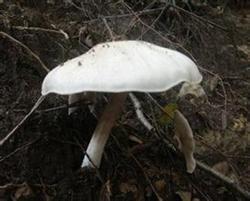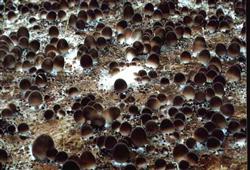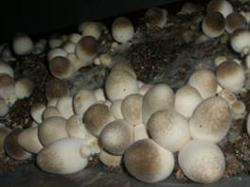Chemical control of miscellaneous bacteria and pests of volvariella volvacea

Prevention and control measures of miscellaneous bacteria: ① try to choose fresh culture materials, exposure for 2 days before use, or soak the raw materials in lime water. ② control the nitrogen content of culture materials, fermentation materials or fermentation cultivation, the addition of wheat bran or rice bran should not exceed 5%, livestock manure should be 3%. No matter what kind of material is used for cultivation, it is best to make secondary fermentation, which can greatly reduce the pollution of ghost umbrellas. During ③ fermentation, the water content of the culture material is controlled within 70% to ensure the high quality stack material obtained by high temperature fermentation. At the same time, when the culture material was mixed, the pH value of the culture material was adjusted to about 10. Trichoderma control measures: Trichoderma can grow in the range of 4 ℃ ~ 42 ℃, spore germination likes high humidity environment, when invading volvariella volvacea medium, it will be white cotton in the initial stage, and turn green in the later stage. If the strain is harmed by Trichoderma, it must be abandoned, even the mildly susceptible strains should be abandoned. Trichoderma so far there is no ideal radical drug, commonly used fungicides, only inhibit Trichoderma, but can not kill, increase the dose, can only kill Trichoderma and straw mushroom mycelium at the same time. Therefore, to create an ecological environment suitable for mycelial growth of volvariella volvacea but not conducive to Trichoderma reproduction is the fundamental measure to control the harm. Once the damage of Trichoderma occurs, it is necessary to immediately ventilate and cool down in order to inhibit the expansion of Trichoderma. After the culture material in the pathogenic stage is infected, the method of injection can be used to inhibit the expansion of Trichoderma. The commonly used solution has 5% carbendazim, 2% formaldehyde, 50% carbendazim, 75% methyl thiophanate, and lime water with a pH value of 10. In addition, sprinkling white ash to the contaminated place has a good control effect. Mushroom mite control methods: give priority to prevention, mushroom as far as possible away from warehouses, feed rooms, livestock houses, etc., cultivation raw materials in secondary fermentation, serious harm, the mushroom room should be sprayed or fumigated for 24 hours with dichlorvos, acarinol and other acaricides for 24 hours, once the mushroom mites are found to be flat or oval, white or yellow, with multiple bristles Should choose the following method to kill it immediately: fumigate and kill mites: dip dichlorvos with cotton balls, put them on the bottom surface of the bed frame, then cover the bed with plastic sheeting, and use drug volatilization to kill mites. Spray to kill mites: spray 1500 times of pyrethroid or propargite to kill mites. Mushroom fly control methods: set up drainage ditches around the mushroom farm, remove stagnant water, and regularly spray 0.5% dichlorvos; culture material for secondary fermentation to kill larvae and eggs; trap and kill with black light. Control methods of bacteria and mosquitoes: keep the mushroom room clean, keep the cultivation place away from garbage heap and rotten substances, remove the old materials as soon as possible after harvest, and in serious cases, spray 1000 times of crystal trichlorfon solution before or after mushroom picking.
- Prev

What problems are often encountered in the cultivation of volvariella volvacea
1. The emergence of group mushroom sowing amount is too large, uneven sowing, will lead to the emergence of group mushroom. Therefore, the sowing rate should be controlled at 0.2-0.3 kg / m2. The sowing method can be layered sowing, mixed sowing or sowing, preferably without hole sowing. 2. Strain aging if the use of aging bacteria, although the germination of hyphae.
- Next

A probe into the death of Straw Mushroom and Young Mushroom
1. The first condition for early cultivation of volvariella volvacea is a mushroom house with certain heat preservation and moisturizing effect. At present, mushroom houses generally have three forms: vegetable tube shed construction, foam board construction and brick reconstruction. two。 Low-temperature varieties should be selected for early cultivation of volvariella volvacea: low-temperature varieties should be selected and the temperature of mushroom house should be controlled at 26 ℃.
Related
- Fuxing push coffee new agricultural production and marketing class: lack of small-scale processing plants
- Jujube rice field leisure farm deep ploughing Yilan for five years to create a space for organic food and play
- Nongyu Farm-A trial of organic papaya for brave women with advanced technology
- Four points for attention in the prevention and control of diseases and insect pests of edible fungi
- How to add nutrient solution to Edible Fungi
- Is there any good way to control edible fungus mites?
- Open Inoculation Technology of Edible Fungi
- Is there any clever way to use fertilizer for edible fungus in winter?
- What agents are used to kill the pathogens of edible fungi in the mushroom shed?
- Rapid drying of Edible Fungi

